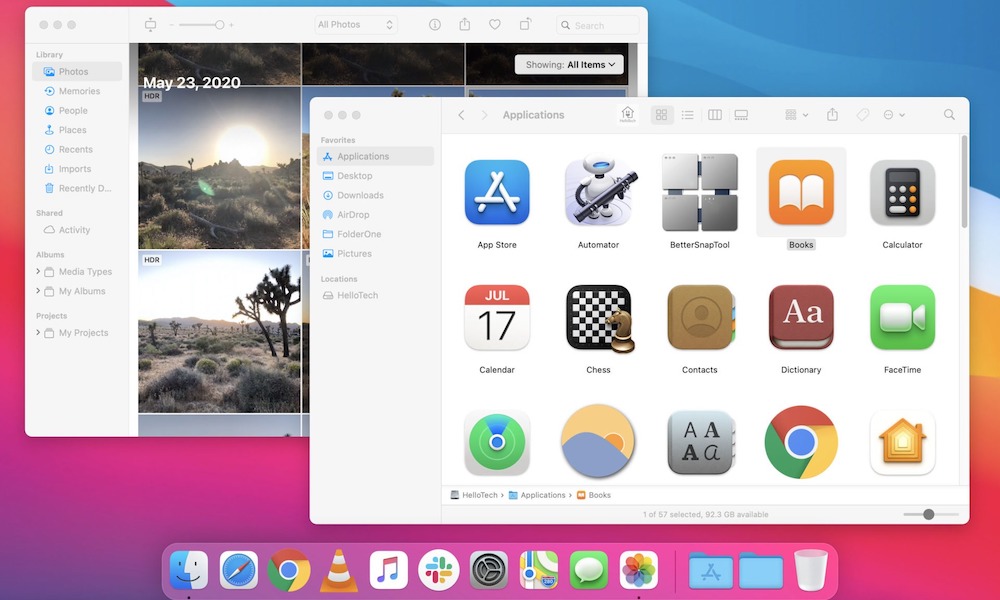Apple Tests macOS on the iPhone
 Credit: HelloTech
Credit: HelloTech
Toggle Dark Mode
We’ve been talking about ARM-based Macs for years. Apple finally put that rumor to bed when it confirmed these mystery Macs at WWDC 2020.
Not only will an A-series processor power these Macs, but they also represent a step towards convergence as the Mac platform moves closer to the iPhone.
The two are getting so close that Apple allegedly is testing macOS on an iPhone, claims a leak from MauriQHD and reported by Noypigeeks.
According to leaked inside information, Apple is testing macOS on an iPhone to see if the phone can offer a desktop-like experience when plugged into a dock or monitor.
This test is part of a more significant push to merge iOS and macOS. Catalyst, claims the leaked report, is the tool Apple will use to bring the two operating systems together into a single, more unified platform.
What Is Catalyst?
Announced at WWDC 2019, catalyst is a development tool that lets developers port their iPad apps quickly over to macOS. Catalyst has gained traction in 2020 as Apple tries to find a common ground between macOS and iOS.
You only have to look at macOS Big Sur to see the gradual convergence of iOS and macOS. In this latest version, macOS has a Control Center just like iOS and mobile apps like Messages were ported over from iOS using Catalyst.
macOS and iOS Collision Course
Catalyst isn’t the only tool bridging the gap between iOS and macOS. Earlier this year, Apple brought its Swift Playgrounds development tool over to macOS. This tool steps you through Swift programming, allowing you to start your work on a Mac and finish it on an iPad.
Apple also enabled universal purchases, making it possible for developers to release iOS, iPadOS, macOS, and tvOS versions of its apps in a bundle. A user then would be able to buy all the apps in a single purchase.
How ARM-Based Macs Fit In
With the transition to ARM-based Macs, the company is blurring the lines between desktop and smartphone when it comes to hardware.
Though powered for desktop applications, these new ARM-powered Macs will use an ARM architecture just like the iPhone. Hopefully, this convergence will make it easy for apps to run seamlessly on a Mac and an iPhone with only a few minor tweaks.
Big Sur is a step in this direction and is coded already to support this new ARM architecture. Apple is expected to release its first ARM macs by the end of the year.
[The information provided in this article has NOT been confirmed by Apple and may be speculation. Provided details may not be factual. Take all rumors, tech or otherwise, with a grain of salt.]






